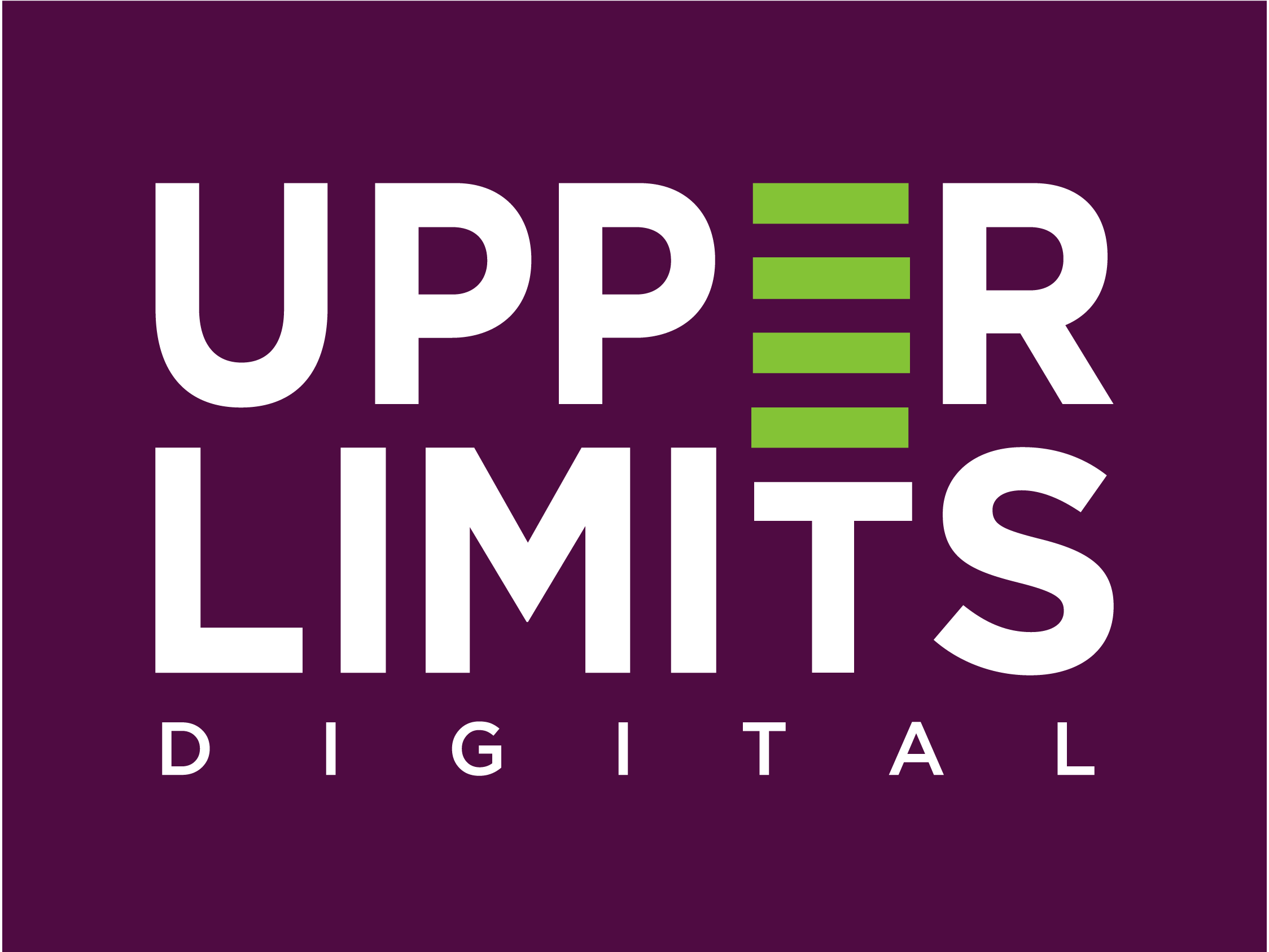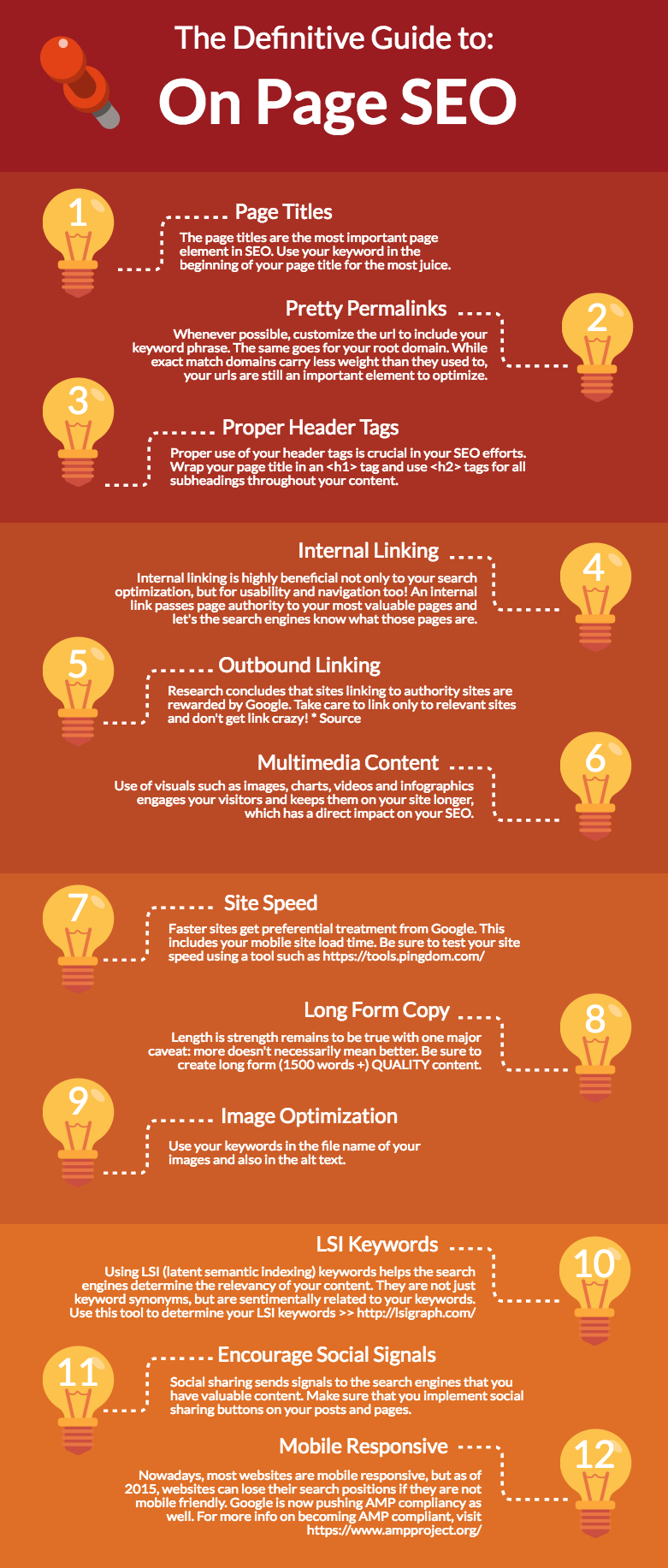Every effective SEO campaign begins at home.
It is still the first and most important step in SEO to make sure that any content on your website that you wish to rank is properly optimized and compliant with best search engine practices.
This guide was created as a checklist for you to ensure that each page is as visible and user friendly as it can be.
The Definitive Guide to On Page SEO
- Page Titles
Arguably, the single most important page element when it comes to SEO is your page title. The page title should be descriptive of what the reader will get by consuming that page’s content, but, assuming the keyword is also a major descriptor of the content, you should naturally use the keyword in the title. And, the closer to the beginning of the title the keyword lies, the better it fares for your SEO. - Pretty Permalinks
Although keyword rich urls have been a declining factor in the algorithmic decisions to rank pages, it still makes sense to inject your keyword if relevant. For example, if you are a plumber and have a services page and your url is www.joesplumbing.com/services, it is natural and applicable to revise your url to read www.joesplumbing.com/plumbing-services. It is also important to note that extraneous characters in your urls can have a negative impact on your efforts, the suggested length of a title is between 35 and 40 characters and a dash is the proper separator over an underscore. - Proper Header Tags
Using a clear header structure is also a pretty major SEO factor. You should wrap your page title in an <h1> tag and all ensuing subheaders should be wrapped in an <h2> tag. Using <h3> – <h6> header tags is less important for your SEO, but may be useful in your design aesthetics. - Internal Linking
SEO is so much more than just a tick list. It is important to map out your site architecture and ensure that your pages are structured in a way that helps Google to understand the hierarchy, but also lead your visitor in a way that makes sense to your goals. Internal linking helps to do this. You are helping Google to see the pages you value on the site hence attributing page authority to important pages, and you are improving the possibility of keeping people on the site longer and visiting more pages. This makes the strategy of internal linking a power move in the SEO game. - Outbound Linking
It is a benefit to find relevant, authority sites and associate yourself with these sites via an outbound link. Read more about the long term study conducted by marketing firm, Reboot, and proving the validity of this SEO strategy here. - Multimedia Content
Creating and incorporating visual content keeps people on your page longer. The longer people are on your page, the higher quality Google assumes your content to be. - Site Speed
Google includes site speed in the overall quality of your site. Page abandonment exponentially increases after 4 seconds so minimizing resources and decreasing load time makes everybody happy. - Long Form Copy
You are probably seeing the trend here. The factors that Google considers are often also helpful to the consumer which are likely catalysts for Google’s inclusion of these factors in their search algorithms. Long form copy is no different. Google, themselves, have alluded to preferential treatment for long form content or “in-depth articles,” as they put it. - Image Optimization
Making surely to properly title an image’s file name and leverage alt text is a small, but helpful way to boost your page’s SEO. It’s not advised to cram keywords into a dozen images on one page, but be descriptive and natural and nix the default image file names. - LSI Keywords
Latent Semantic Indexing is a relatively new concept that involves determining people’s intent. So, the idea is Google scans the website content for other words that are not necessarily synonyms for the keyword, but it helps match searches to topics that are semantically close. Here is an example of LSI in action: I searched for “best marketing tips for small businesses.” The #1 search result is not an exact match for marketing tips, yet they use the term marketing ideas. This search result ranked through Latent Semantic Indexing.
- Encourage Social Signals
Social signals are triggered when someone shares content to a social platform, whether it be Facebook, Tumblr or even an Evernote public folder. Make it easy for people to share your content by implementing social share buttons attached to each piece of content. For a list of WordPress plugins to accomplish this functionality, check out this post. - Mobile Responsive
Just last year, in 2015, research suggested that up to 80% of websites are still not mobile responsive. After ‘Mobilegeddon‘ in early 2015 rocked the Internet, it became painfully apparent that if your website was not mobile responsive, you had little chance of competing in search in an increasingly mobile friendly world. Now, taking mobile friendly to a whole new level, Google has introduced its AMP Project which demands even further mobile compliance.
The digital landscape is in constant flux. This combined with the ever-elusive, ever-changing Google algorithms determining the fate of many a business or publisher, makes it extremely difficult to compete in the saturated search market. Despite the uphill battle many face, if you focus on creating quality content that supports your goals and connects with your audience supported by smart strategies that serve to fine tune those focus goals, you will have a much better chance at capturing a portion of the search market share. Be careful to map out well-thought out content that speaks to the heart of your target customer and guides them through a process in a natural and compelling manner.
It is also important to note that Google doesn’t corner the entire share of the search pie, contrary to popular belief. With increasingly more mobile internet users and their varied default search engines, we are seeing a rise in the use of other search engines such as Bing and Yahoo. So, be sure to check your rankings and optimize for those search engines as well!
Phew! That was a wealth of information, but we truly hope it helps you in your efforts and you find the creative outlets to position your content for effective long-tailed keyword phrases. Let us know your SEO challenges, successes and questions in the comment section below.

